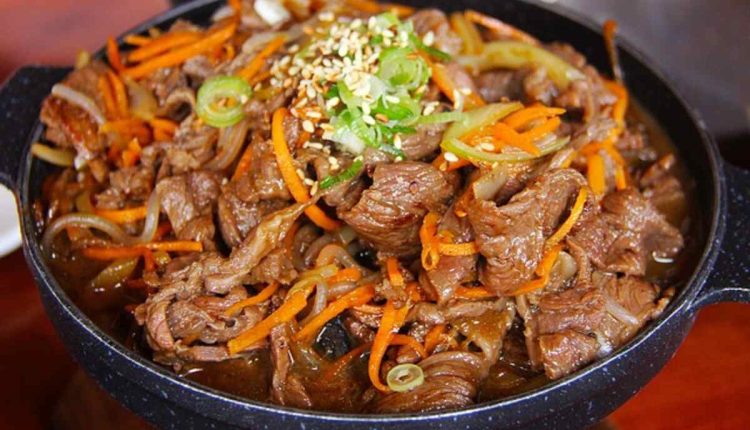What Are MRE Meals?
Preppers know MREs to be reliable survival food supplies. Packed to last and with everything an active service member might require for days or even months in hostile environments, MREs offer reliable survival food options. Find the best mre.
Each meal is marked with a four-digit Julian code (the first two digits range from 0-9 and the final three from 1-366) that can either be eaten cold or heated up using our flameless food heater.
What is an MRE?
Meals Ready-to-Eat (MREs) are complete meals designed specifically for military consumption that come equipped with their flameless heater. MREs were introduced as a replacement to Meal Combat Individual or MCI meals that weren’t as popular among soldiers; each MRE includes an entree, side dish or dessert, bread or cracker, beverage mix, seasonings, and condiments as well as sodium reduction, so service members with salt restriction diets can consume them too.
An MRE (meal-replacement envelope) contains food preserved using cutting-edge processing and packaging technologies that extend its shelf-life from 3 years at 80 degrees Fahrenheit or six months at 100 degrees Fahrenheit to 6 months when exposed to 100 degrees Fahrenheit heat. MREs play an essential role for military service members deployed away from home bases or where regular food deliveries cannot reach, providing complete and nutritious meals when standard food deliveries do not.
Each MRE comes equipped with an instruction card outlining how to prepare either hot or cold meals and typically contains a plastic spoon and one or more other utensils (spork for soups/sauces); accessory packs usually also include wet towelettes for cleaning up after eating an MRE.
MRI scans provide a noninvasive means of viewing your small intestine and identifying signs of Crohn’s disease, including inflammation and complications. While they are relatively cost-effective, some insurance plans do not cover them; additionally, you may experience sedation during the procedure, and some patients have reported side effects like abdominal pain, diarrhea, and a metallic taste in their mouth.
Military Grade
MREs (meals ready to eat) are self-contained meals intended to be eaten without external sources or water sources, making them accessible and convenient to consume in rugged environments without additional food sources or water needs. Once open and warmed up in their package, military MREs offer some differences from civilian ones; typically, on average, they contain 1,250 calories each using a flameless ration heater – they even include extra goodies such as coffee, flavored drinks, and mints to improve soldier welfare in such harsh environments!
MRE case packs feature 12 varied menu items that rotate yearly, such as Hash Browns with Bacon, Southwest Beef and Black Beans Tortillas, or Chicken Pesto Pasta. A flameless ration heater is included with every meal, so heating up can be accomplished simply by adding 30 ml of water.
MREs may cost slightly more than frozen meals, but they last significantly longer when stored at room temperature – 3 to 4 years at most temperatures- although their shelf life may be reduced under higher temperature conditions.
For maximum efficiency in finding MREs, the ideal source is suppliers that specialize in them. They will have up-to-date products, making them more reliable than civilian sellers who often sell expired cases of MREs. You may be tempted to shop online; be wary, though – many resellers on Amazon sell only less desirable MRE options so they can charge more; read reviews carefully when doing this! If you find a supplier you like, regularly stock up on their products.
How Long Do MREs Last?
MREs are designed to last since they don’t require refrigeration and come packaged in airtight containers that keep oxygen out, thus protecting against spoilage of their food contents. Furthermore, MREs contain sodium, which acts as a natural disinfectant, killing bacteria cells – this is why you can use salt as a cure for sore throats – it draws water out from within them!
MREs last so long because they’re vacuum-sealed and don’t require refrigeration or rehydration before eating them; plus, their construction allows them to tolerate temperatures across a broad spectrum – although hot, humid environments will accelerate degradation faster.
MREs typically last five years after being manufactured; however, if stored properly, they could last even longer. For optimal storage conditions, 75 degrees Fahrenheit should be optimal, while they may even outlive this expectation in cold environments or freezers.
To identify whether an MRE is still edible, check its packaging for a “time and temperature indicator,” commonly referred to as a “TTI.” This sticker usually features two circles that indicate freshness – with the outer one usually featuring darker pigmentation than its lighter counterpart. If its outer ring appears darker than expected, that means its shelf life has expired and should no longer be eaten.
Store MREs in a cold, dry area with low humidity to maximize their shelf-life. A garage or basement that can maintain an optimal climate would be an ideal place for this purpose; they can also be stored in plastic totes inside closets or pantries. Check for signs of damage, such as bulging packages or strange smells, regularly for a maximum shelf-life extension.
Read Also: Lookdown Fish (Selene Vomer)


